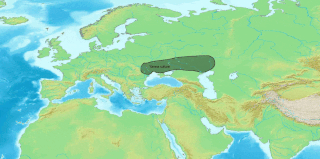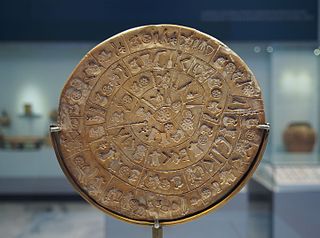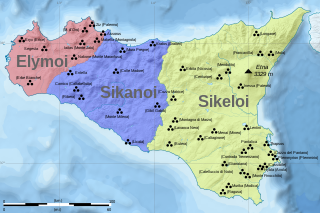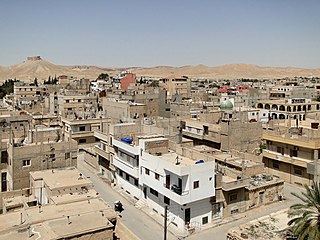Related Research Articles

Armenian is an Indo-European language and the sole member of an independent branch of that language family. It is the native language of the Armenian people and the official language of Armenia and the unrecognized Republic of Artsakh. Historically spoken in the Armenian highlands, today Armenian is widely spoken throughout the Armenian diaspora. Armenian is written in its own writing system, the Armenian alphabet, introduced in 405 AD by the priest Mesrop Mashtots. The estimated number of Armenian speakers worldwide is between five and seven million.

The Hittites were an Anatolian people who played an important role in establishing first a kingdom in Kussara, then the Kanesh or Nesha kingdom, and next an empire centered on Hattusa in north-central Anatolia. This empire reached its height during the mid-14th century BC under Šuppiluliuma I, when it encompassed most of Anatolia and parts of the northern Levant and Upper Mesopotamia.

The Indo-European languages are a language family native to the overwhelming majority of Europe, the Iranian plateau, and the northern Indian subcontinent. Some European languages of this family—English, French, Portuguese, Russian, Dutch, and Spanish—have expanded through colonialism in the modern period and are now spoken across several continents. The Indo-European family is divided into several branches or sub-families, of which there are eight groups with languages still alive today: Albanian, Armenian, Balto-Slavic, Celtic, Germanic, Hellenic, Indo-Iranian, and Italic; and another nine subdivisions that are now extinct.

The Anatolian languages are an extinct branch of Indo-European languages that were spoken in Anatolia, part of present-day Turkey. The best known Anatolian language is Hittite, which is considered the earliest-attested Indo-European language.

The Phaistos Disc or Phaistos Disk is a disk of fired clay from the island of Crete, possibly from the middle or late Minoan Bronze Age, bearing a text in an unknown script and language. Its purpose and its original place of manufacture remain disputed. It is now on display at the archaeological museum of Heraklion. The name is sometimes spelled Phaestos or Festos.

Luwian, sometimes known as Luvian or Luish, is an ancient language, or group of languages, within the Anatolian branch of the Indo-European language family. The ethnonym Luwian comes from Luwiya – the name of the region in which the Luwians lived. Luwiya is attested, for example, in the Hittite laws.

Hittite, also known as Nesite, is an extinct Indo-European language that was spoken by the Hittites, a people of Bronze Age Anatolia who created an empire centred on Hattusa, as well as parts of the northern Levant and Upper Mesopotamia. The language, now long extinct, is attested in cuneiform, in records dating from the 17th to the 13th centuries BCE, with isolated Hittite loanwords and numerous personal names appearing in an Old Assyrian context from as early as the 20th century BCE, making it the earliest attested use of the Indo-European languages.

Proto-Indo-European (PIE) is the reconstructed common ancestor of the Indo-European language family. No direct record of Proto-Indo-European exists; its proposed features have been derived by linguistic reconstruction from documented Indo-European languages.

Indo-European studies is a field of linguistics and an interdisciplinary field of study dealing with Indo-European languages, both current and extinct. The goal of those engaged in these studies is to amass information about the hypothetical proto-language from which all of these languages are descended, a language dubbed Proto-Indo-European (PIE), and its speakers, the Proto-Indo-Europeans, including their society and Proto-Indo-European mythology. The studies cover where the language originated and how it spread. This article also lists Indo-European scholars, centres, journals and book series.

Elymian is the extinct language of the ancient Elymian people of western Sicily. Its characteristics are little known because of the extremely limited and fragmentary nature of the surviving texts.

Robert Stephen Paul Beekes was a Dutch linguist who was emeritus professor of Comparative Indo-European Linguistics at Leiden University and an author of many monographs on the Proto-Indo-European language.

Palmyra is a city in central Syria, administratively part of the Homs Governorate. It is located in an oasis in the middle of the Syrian Desert 215 kilometres (134 mi) northeast of Damascus and 180 kilometres southwest of the Euphrates River. The ruins of ancient Palmyra, a UNESCO World Heritage Site, are situated about 500 metres southwest of the modern city centre. Relatively isolated, the nearest localities include Arak to the east, Al-Sukhnah further to the northeast, Tiyas to the west and al-Qaryatayn to the southwest.

The Anatolians were Indo-European-speaking peoples of the Anatolian Peninsula in present-day Turkey, identified by their use of the Anatolian languages. These peoples were among the oldest Indo-European ethnolinguistic groups and one of the most archaic, because Anatolians were among the first Indo-European peoples to separate from the Proto-Indo-European community that gave origin to the individual Indo-European peoples.

Many people have claimed to have deciphered the Phaistos Disc.

Proto-Anatolian is the proto-language from which the ancient Anatolian languages emerged. As with almost all other proto-languages, no attested writings have been found; the language has been reconstructed by applying the comparative method to all the attested Anatolian languages as well as other Indo-European languages.

The Anatolian hypothesis, also known as the Anatolian theory or the sedentary farmer theory, first developed by British archaeologist Colin Renfrew in 1987, proposes that the dispersal of Proto-Indo-Europeans originated in Neolithic Anatolia. It is the main competitor to the Kurgan hypothesis, or steppe theory, which enjoys more academic favor.

The Armenian hypothesis, also known as the Near Eastern model, is a theory of the Proto-Indo-European homeland, initially proposed by linguists Tamaz V. Gamkrelidze and Vyacheslav Ivanov in the early 1980s, which suggests that the Proto-Indo-European language was spoken during the 5th–4th millennia BC in "eastern Anatolia, the southern Caucasus, and northern Mesopotamia".

Proto-Armenian is the earlier, unattested stage of the Armenian language which has been reconstructed by linguists. As Armenian is the only known language of its branch of the Indo-European languages, the comparative method cannot be used to reconstruct its earlier stages. Instead, a combination of internal and external reconstruction, by reconstructions of Proto-Indo-European and other branches, has allowed linguists to piece together the earlier history of Armenian.

The Proto-Indo-European homeland was the prehistoric linguistic homeland of the Proto-Indo-European language (PIE). From this region, its speakers migrated east and west, and went on to form the proto-communities of the different branches of the Indo-European language family.

Frederik Christiaan Woudhuizen was a Dutch independent scholar who studied ancient Indo-European languages, hieroglyphic Luvian/Luwian, and Mediterranean protohistory. He was the former editor of Talanta, Proceedings of the Dutch Archaeological and Historical Society.
References
- ↑ J. Alexander Kerns and Benjamin Schwartz (1973): A Sketch of the Indo-European Finite Verb. Volume 3 of Monographs on Mediterranean antiquity. New York University, Department of Classics, Brill Archive. 85 pages. ISBN 9789004035478
- 1 2 Yoël L. Arbeitman (1988): A Linguistic Happening in Memory of Ben Schwartz: Studies in Anatolian, Italic, and Other Indo-European Languages. Volume 42 of Bibliothèque des Cahiers de l'Institut de linguistique de Louvain (BCILL). 598 pages. ISBN 9789068311433
- ↑ Benjamin Schwartz (1959): "The Phaistos disk". Journal of Near Eastern Studies, volume 18, issue 2, pages 105–112. doi : 10.1086/371517 S2CID 162272726
- ↑ Benjamin Schwartz (1959): "The Phaistos Disk II". Journal of Near Eastern Studies, volume 10, issue 3, pages 222-226.
- ↑ Syracuse Herald Journal, Syracuse NY, issue 1981-12-29, page 39.